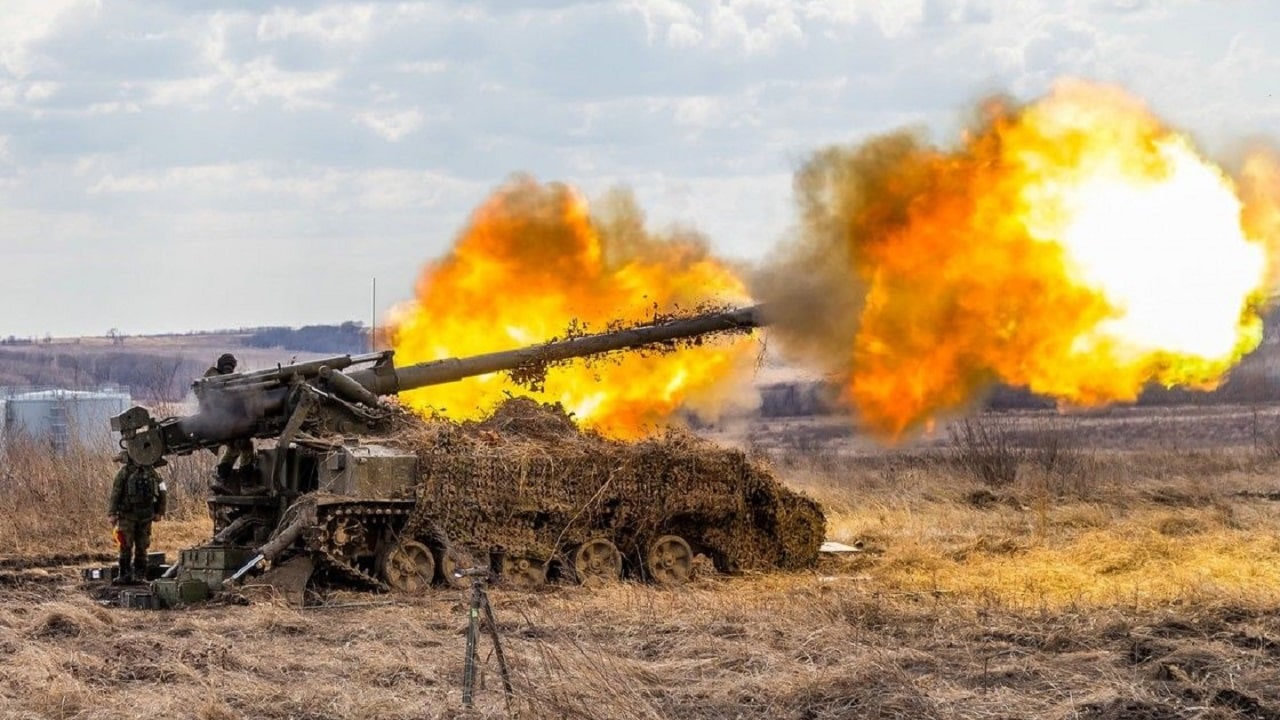One usually associates mortars with portable tubes that support an infantry platoon or company. Sometimes larger 120mm mortars are placed on infantry fighting vehicles for more firepower. But the Russians believe in going big or going home. They have something twice that size – gigantic 240mm mortars that are mounted on self-propelled tracks. There is nothing comparable to the 2S4 Tyulpan (Russian for tulip) heavy mortar. It’s another weapon that is indiscriminately bombing cities in Ukraine.
Ideal Siege Gun to Flatten Cities
The 30-ton 2S4 Tyulpan is one of the biggest mortar systems in the world, if not the largest. It’s an ideal weapon to besiege cities. The mortar tube is transported in a horizontal position. When stopped and prepped for fire, the gun elevates vertically to a 50 to 80-degree angle that reminds you of a smaller mortar. But the result is anything but small.
2S4 Tyulpan: Dangerous to Many Types of Targets
A blast from the 28-ton Tyulpan smoothbore mortar can take out fortified buildings, apartments, emplacements, bunkers, and airport runways, plus tanks and armored vehicles. The Tyulpan was used successfully in 2014 by Russian separatists (or Russian regulars) at airports in Donetsk and Luhansk. The shell arcs high and then comes down in a near-vertical fashion to burst on top of a building or other targets. Each shell is five-feet long and the vehicle can carry 40 projectiles on board.
Comes With a Wide Variety of Projectiles
The mortar has a range of 6.2 miles, much shorter than other Russian artillery. A rocket-assisted round can travel 11 miles. The giant 240mm shells can be high-explosive, incendiary, fragmentary, or armor-piercing. During the Cold War, the Tyulpan was equipped with chemical warheads and tactical nuclear weapons. There is a precision-guided projectile called the “Daredevil” that was used in Afghanistan and Chechnya, where it pulverized Grozny and took out Chechens who were hiding in mountain caves. Alarmingly, the Tyulpan can fire cluster munitions, which the Syrians employed against urban targets during the civil war. These bomblets float down by small parachutes.
Not a High-Tech System
The Tyulpan has a slow-rate of fire at one round per minute. It is not muzzle-loaded like normal mortars – shells are loaded into the breech. The external tube is attached to the rear of the vehicle and then lowered into position.
2S4 Tyulpan: Cold War Relic
There’s nothing new about this beast. It has been around since 1971. The Russians have around 40 in service with about 390 in reserve. A V-59 V-12 diesel engine pushes out 520-horsepower, but it’s not very fast at 28-miles per hour. It isn’t designed to lead from the front. This system is placed in the rear and its armor is no match for enemy counter-battery fire, air strikes, or drone air-to-ground missiles.
Eliminate It Before It Destroys Neighborhoods
This siege weapon is another problem for the Ukrainian Ministry of Defense. It can be eliminated with various types of counter-fire, but once it has a safe place to bombard, it can rain down doom on population centers. The aforementioned use in Chechnya and Syria shows its powerful fires against civilians and its ability to wreck buildings and other fortifications. The Ukrainians will have to seek out the Tyulpan and remove it from the battlefield before it terrorizes their cities.
Now serving as 1945’s Defense and National Security Editor, Brent M. Eastwood, PhD, is the author of Humans, Machines, and Data: Future Trends in Warfare. He is an Emerging Threats expert and former U.S. Army Infantry officer. You can follow him on Twitter @BMEastwood.

